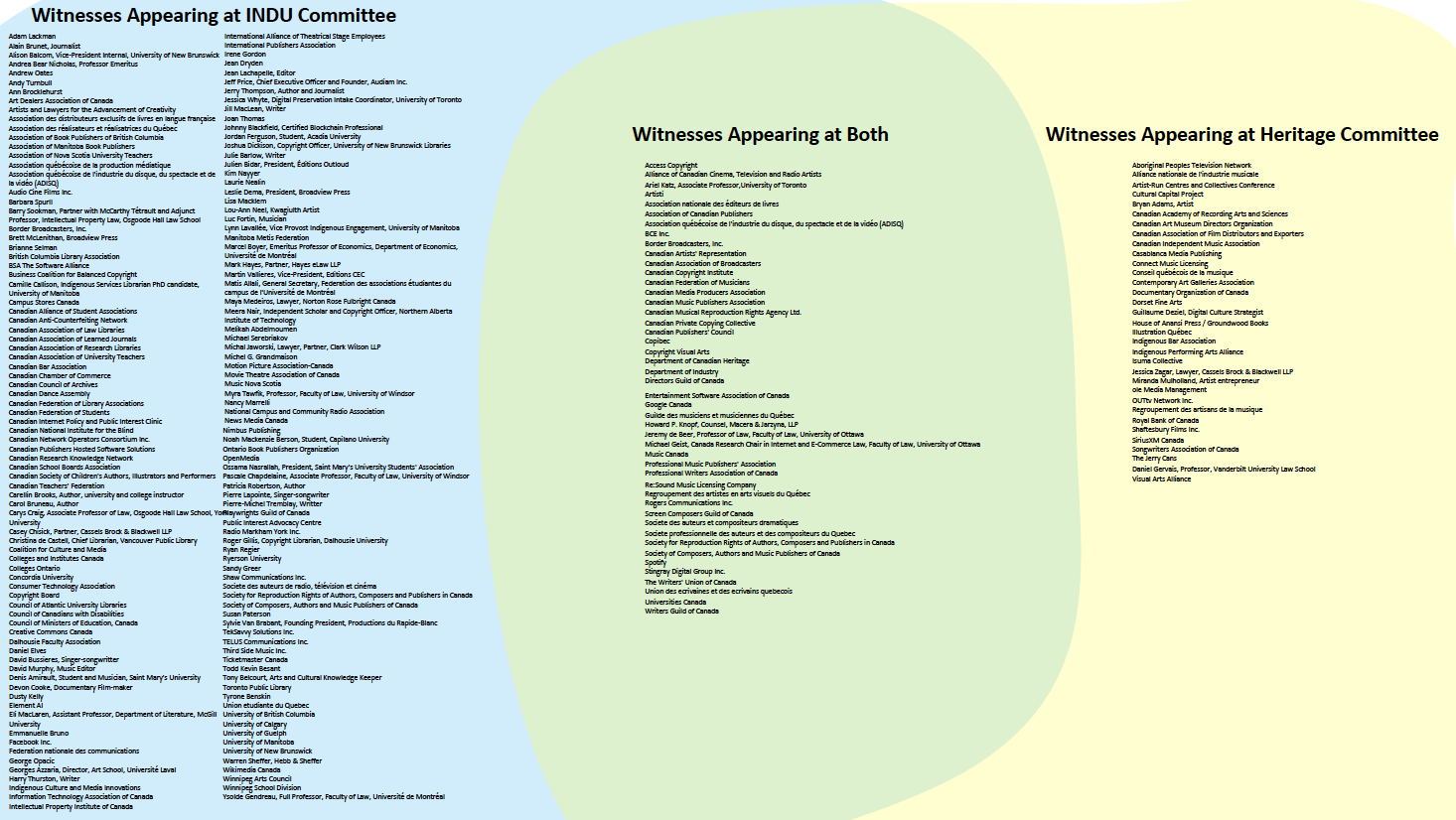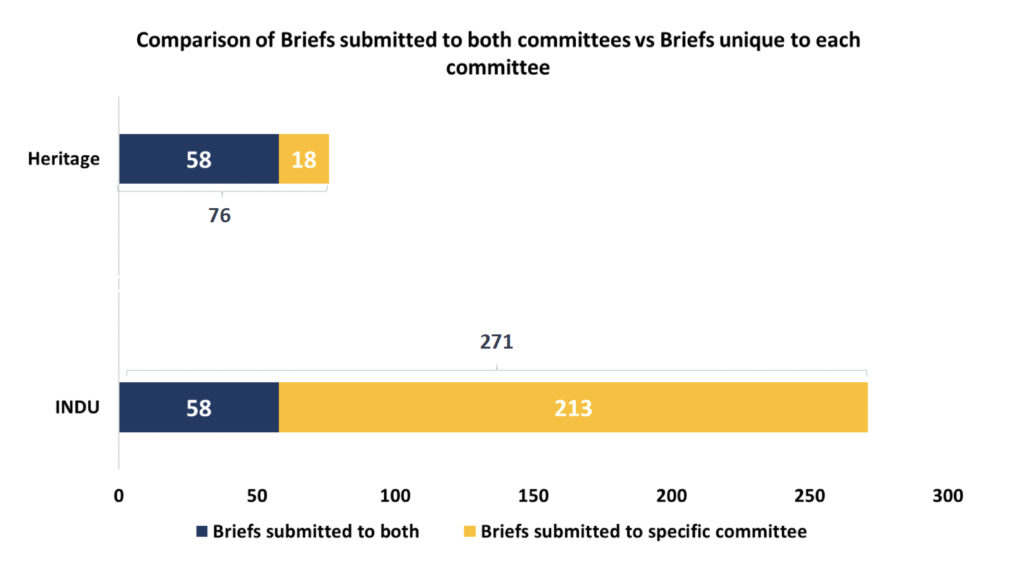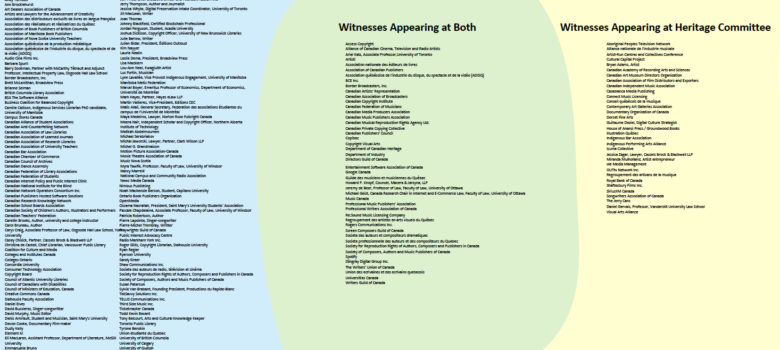The Industry committee’s clear assertion this week as the authoritative copyright review is grounded in process since the government gave it sole responsibility for conducting the review. While my earlier posts focus on the process and the unprecedented INDU release, the committee justifiably points out that it also heard from far more witnesses through hearings and briefs than the Heritage committee. In fact, it notes that it heard from the “vast majority of stakeholders who contributed to CHPC’s study.” Working with University of Ottawa student Philip Abraham, we reviewed the witness lists, the brief submissions, and the citations by the committees to better assess claims about which committee best reflects the full spectrum of stakeholder views on copyright. This post examines who participated in the committee work and a follow-up posts will highlight the balance in the witness lists and whether the committees were listening.
The following chart features all the witnesses for the two committees. Where witnesses appeared on behalf of an organization, the organization is listed (multiple organizational witnesses are treated as one). Where the witness appeared in a personal capacity, the individual name is listed. The data in this regard is unequivocal, demonstrating that Industry heard from far more witnesses representing a far wider and deeper range of perspectives from all parts of the country.
Indeed, the Industry committee copyright review heard from two and a half times as many witnesses as the Heritage committee: 203 organizations and individuals for INDU vs. 79 for Canadian Heritage. INDU is also correct that the majority of witnesses that appeared before Canadian Heritage also appeared before INDU as there were only 33 witnesses that only appeared before Heritage (46 witnesses appeared before both). Of the 33 that did not, several submitted briefs to INDU that were cited in its final report. INDU also ensured greater geographic representation, having held lengthy hearings in Halifax, Montreal, Toronto, Winnipeg, and Vancouver. The Heritage committee did travel outside Ottawa.

Comparison of INDU vs. CHPC copyright witnesses
Venn Diagram INDU v Heritage Witnesses
The submission of briefs tell a similar story. Both committees invited the public to submit briefs if they were unable to appear as witnesses. INDU also received far more briefs: 271 briefs went to INDU vs. just 76 to Heritage (this treats a brief submitted by multiple individuals as a single brief). A total of 58 individuals and organizations submitted briefs to both committees, In other words, Heritage only received 18 briefs that were not submitted to INDU. As a result, INDU heard from hundreds more organizations and individuals and received most of the same brief information as Heritage.

Brief comparison
The sum total is striking. With hundreds of witnesses and briefs, there were just 51 that only involved appearances or submissions to Heritage. There were far more submissions and briefs that went to both committees and an even larger number that went exclusively to INDU. That left INDU with a much more comprehensive consultation that overlapped with much of Heritage but also included hundreds of additional witnesses and briefs. Of course, witnesses and submissions tell only part of the story. In upcoming posts, I’ll examine the breakdown of perspectives from the witnesses as well as who the committees listened to as determined by actual citations of witness comments or briefs.








The comparison diagram is unfortunately unreadable.
Here is a slightly larger version, if the comment system lets me post the link:
http://cdn.michaelgeist.ca/wp-content/uploads/2019/06/witnessvenn.jpg
I’ve added a downloadable PDF version that you can access and enlarge.
Pingback: News of the Week; June 26, 2019 – Communications Law at Allard Hall